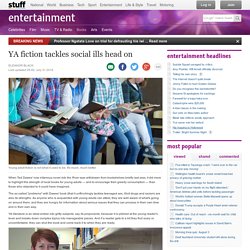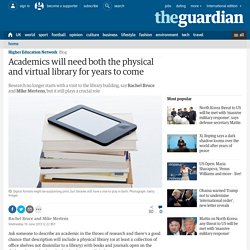

YA fiction tackles social ills head on. Last updated 05:00, July 31 2016 Young adult fiction is not what it used to be.

It's much, much better. When Ted Dawes' now infamous novel Into the River was withdrawn from bookshelves briefly last year, it did more to highlight the strength of local books for young adults — and to encourage their greedy consumption — than those who objected to it could have imagined. The so-called "problems" with Dawes' book (that it unflinchingly tackles teenaged sex, illicit drugs and racism) are also its strengths. As anyone who is acquainted with young adults can attest, they are well aware of what's going on around them, and they are hungry for information about serious issues that they can process in their own time and in their own way.
YA literature is an ideal entree into gritty subjects, say its proponents, because it is pitched at the young reader's level and breaks down complex topics into manageable pieces. Erica Donald/Fairfax NZ Jim Chipp 'Publishers are braver now' Jo McKenzie-McLean Unknown. The New School Library. Without question, the Internet has changed the way we think and learn, and will continue to do so as our technology evolves. In particular, the ability to access enormous amounts of information at any time from almost any place is forcing schools to redefine the idea of a classroom and the way we approach teaching.
It is also reshaping the notion of school library services — what libraries look like and how they and librarians best serve schools. Increasingly, we hear the questions: “Are libraries necessary today? Isn’t everything on the Internet? Can’t we use the library space for better purposes?” Clearly, a popular impression out there is that the plentiful free information on the open Internet will answer all academic needs. We respectfully disagree — and the research is on our side. Today’s independent school libraries have an increasingly different look and function from libraries of the past, even the recent past. Academics will need both the physical and virtual library for years to come. Ask someone to describe an academic in the throes of research and there's a good chance that description will include a physical library (or at least a collection of office shelves not dissimilar to a library) with books and journals open on the desk, and a notebook – whether hard copy or digital.

The reality may be somewhat different. Jisc and RLUK's recent survey of around 3,500 UK academics highlighted that while academics primarily look to the library to provide the journals and books necessary to their teaching and research, they spend much less time in the physical library than the virtual one. The vast majority of academics who responded – around 90% – saw the main role of the university library as a purchaser of content. While 45% described themselves as very dependent on their library for their work, only 2% of academics start their research with a visit to the library building. In the case of journals, digital may have supplanted print format almost entirely.
Press release: ‘Digital natives’ are still bound to printed media. Released: June 25, 2013 Americans ages 16-29 are heavy technology users, including using computers and internet at libraries.

At the same time, the most still read and borrow printed books, and value a mix of traditional and technological library services. WASHINGTON (June 25, 2013) — Belying the stereotype that younger Americans completely eschew print for digital, those ages 16-29 have wide-ranging media and technology behaviors that straddle the traditional paper-based world of books and digital access to information. One major surprise in a new report from the Pew Research Center is that even in an age of increasing digital resources, those in this under-30 cohort are more likely than older Americans to use and appreciate libraries as physical spaces – places to study for class, go online, or just hang out. The report paints a textured portrait of younger Americans’ sometimes surprising relationships with libraries’ physical and digital resources: About this research. What%20should%20students%20read%204 10.